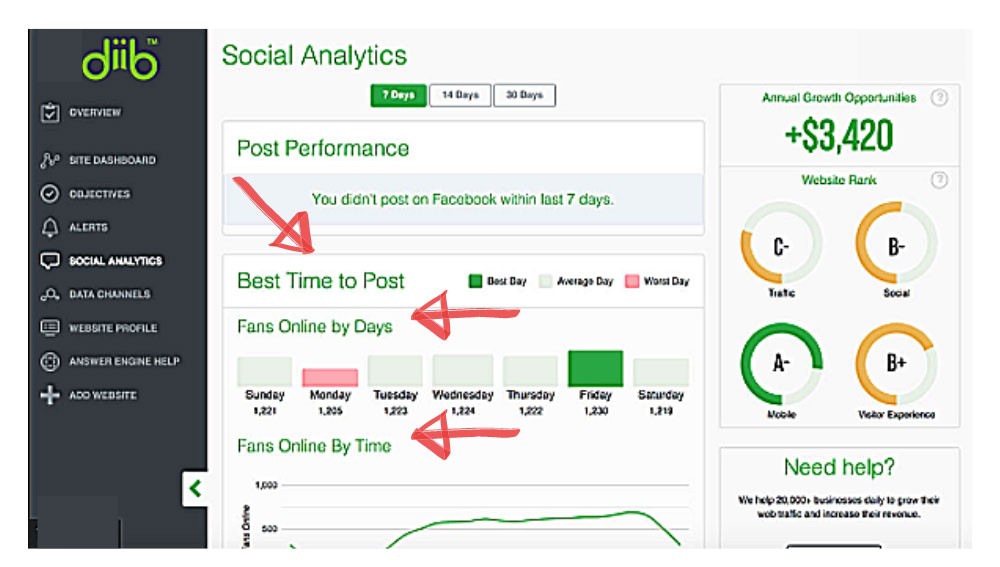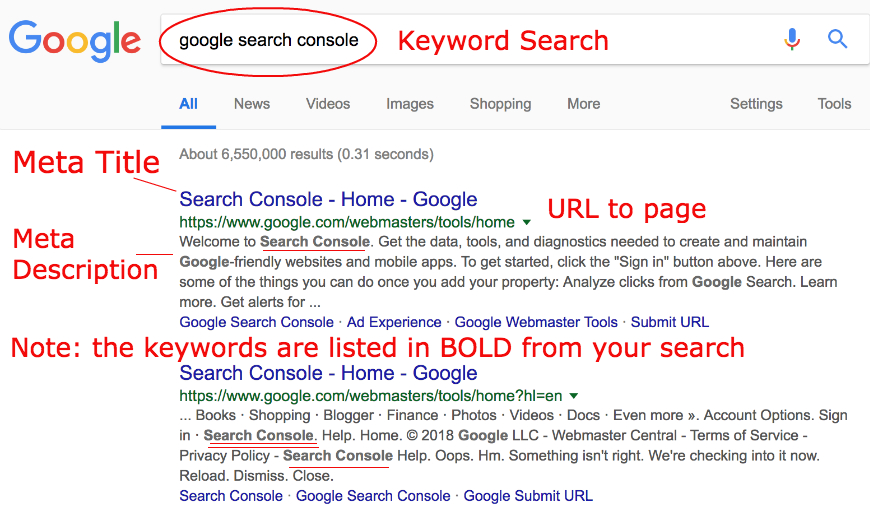How Learning More About SEO Can Boost Profitability
The internet created a global business environment for all entrepreneurs, small business owners, and large corporations. Several things can help make a business stand out above its competitors, one of which is an intelligent use of SEO on websites, blogs, and social media platforms. Not all business owners are tech savvy. In fact, someone unfamiliar with cutting-edge technology tools or digital marketing might ask, “What does the acronym SEO stand for?” and how can it help me in business?
In response to the question, “What does the acronym SEO stand for in web design and development?” there are two types of answers: basic and complex. The basic answer regarding the acronym “SEO” is that it stands for “Search Engine Optimization.” As for what it is, it refers to the process of improving the quality and quantity of website traffic and web page activity from search engine results. On a more complex level, there are various things you can do regarding the structure, content, and overall user experience of a website. You can also effectively monitor social media activity to help build and manage a brand and improve your ranking in search engine results. For instance:

Website Quality Is Necessary for Online Business Success
What does SEO stand for in web design and development as opposed to its application in a social media campaign? Consider this: What good is your website if no one knows it exists? One of your primary goals in developing and maintaining a website for your business is undoubtedly to attract leads, prospective clients, and customers for your products or services. Learning how to use SEO properly helps make your website more visible online. It can also boost its ranking on a Search Engine Results Page (SERP). People tend to click the top links that show up on a SERP.
**Did you know?? 95% of search traffic goes to the first page of search results. (Source)
Skilled use of SEO helps ensure that your website’s links will be near the top. This is particularly important if your business operates solely online but is helpful for businesses that function in a brick-and-mortar setting with supplemental online services. Think of your website as the center of your digital marketing world. Learning how to develop an SEO-friendly site from the start increases your chances of online success. A search engine must be able to explore and read the pages on your website. This is typically done through an internet bot called a “web crawler.” Focusing on the web design and development issues included in the following list can help make your website SEO-friendly:
- Careful choice of a domain that is relevant to your purpose
- Choosing a host that is fast and platform-specific
- Custom choice of content management system (CMS)
- The main content of your site should be text-based
- Internal link structure and URL
- Site navigation
Focusing on these central issues helps boost SEO and makes a website more visible, easily accessible, and user-friendly, creating an environment ripe for sales! You can improve SEO by carefully chosen images, text, URLs, and hyperlinks. You must address these as separate issues for each of your web pages because not only does your overall website gain a ranking, each page has its own search engine results, as well.
When more and more of your web pages rank high on a search result page, more traffic is steered to your website, which means more opportunities to achieve conversions. A conversion occurs when a visitor to your website performs your desired action, such as filling out a contact form or making a purchase. A conversion rate of two to five percent is considered a good rating. In addition to subtle calls to action, testimonials and reviews, and live chat boxes, strategic use of SEO can help improve your overall conversion rate. Here is an example of a call to action:

(Image Credit: LiveAgent)
Common Issues That Cause SEO Problems
If a search engine can’t find your website or content on its pages, it works against you in a highly competitive business environment. You might even have a higher quality product than a competitor. If the competitor has found a way to use SEO to gain more traffic to their website, the competitor may get more sales even though you have a better product. The following list shows common issues that cause SEO problems, which may occur if website design and development are not adequately geared toward SEO success:
- Orphaned content (can’t be found)
- Content only found through a direct search on site
- Problems with audio, video, or other files
- Issues caused by embedded content from other sites
Both humans and search engines must easily be able to discover your website content and understand it in context with the overall structure and purpose of your website. The key to success is finding ways to improve your SEO so that your web pages get a higher search ranking than your competitors. A high SERP ranking will increase traffic to your website. From there, however, you must have quality content and user-friendly navigation to keep visitors interested. A quality service or product turns them into customers who rely on your business to fulfill their product or service needs.
A balance must be achieved between using SEO and having a quality website and business to support the traffic you’ll gain. You can have the best ranking in the world, but you won’t build a loyal customer base if your website, services, or products are of poor quality. Overall, it takes quality effort and standards to convince people that your service or product is the best. Careful use of SEO is the first step in the right direction to online and in-person business success.
Using Twitter, Instagram, and Other Social Media to Your Business Advantage
What does SEO stand for in social media? Social media SEO refers to the process of syncing your social media platforms with your website so that search engines will use your social media activity to boost organic traffic on your website by way of a search engine. Social media doesn’t directly affect SEO. However, while it is not a direct ranking factor, meaning bots do not crawl your social media pages, a quality social media campaign can positively affect your website’s SERP ranking.
Your “social signals” refer to the number of shares, likes, dislikes, pins, and visibility your social media pages have, as perceived by search engines. In other words, social signals are the metrics of human interactions on your social media platforms. Using Twitter as an example, if someone retweets one of your posts, it functions similarly to a backlink, indirectly impacting a SERP ranking.
Ways to Improve SEO to Make Your Website or Blog Stand Out
Content is, by far, the number one factor that drives your SERP ranking. However, this doesn’t necessarily mean you can get away with quantity over quality. You need both. A successful SEO marketing campaign must always carefully review website content. Your goal is to consistently produce fresh, relevant, informative content that interests your target audience and attracts new visitors to your site. In short, quality content increases website traffic.
You Might Also Like
Your website’s content must also demonstrate an authoritative voice in a featured topic. Whatever your service or product happens to be, quality content must establish you as a go-to source of helpful and interesting information to people who need or desire your service or products. Issues such as proper grammar and punctuation, a professional tone, easy-to-read text, and strategic use of white space creates quality content that will keep visitors coming back for more.
If a first-time guest to your website finds obsolete pages, posts that haven’t been updated in more than a month, or broken links, they will not likely return a second time and will not recommend your site to others. On the other hand, if a visitor quickly finds what they are looking for on our site and is entertained or informed by the featured content, future visits are more likely. A visitor is also more likely to mention your website in casual conversation with friends and family or in direct response to someone looking for a product or service that your website offers.
***Fun Facts:
- 57% of marketing executives view content development as the most effective SEO strategy.
- 47% of users interact with three to five pieces of content before contacting a business.
Careful Choice of Keywords and Phrases Is Important
Strategic use of keywords or phrases also helps boost SEO. There are many ways and available tools to help optimize keyword usage. One simple activity is to imagine yourself as a first-time visitor to your website. If you were a person who was looking for information on the type of service or product your company provides, what words or phrases might you type into a search bar to find relevant websites online? For instance, someone wanting to know how to lower energy costs by using natural lighting might type “ways to use natural lighting to lower electric bill” into a search bar. If your business sells windows, you might include the key phrase “ways to use natural lighting” in the content of a web page to increase your page ranking for that topic.
Where you place the keywords on a web page is just as important as the exact wording you choose. It’s best to include a key phrase in the title of a post, if possible, without sounding forced. You’ll want to avoid using keywords within the first few lines of an introductory paragraph; however, they should be used in the opening paragraph toward the end. It’s also a good idea to “sprinkle” your chosen keywords throughout the body of a specific post and again in the closing paragraph. Many people mistakenly think, “the more, the better” for keyword placement. However, quality SEO keeps keyword usage between two and five times in a single body of content. More than that takes away from a natural flow of wording known as “keyword stuffing,” which is counterproductive.
You can also include keywords in the subheadings of a post, provided, as mentioned earlier, that the phrases you have chosen flow naturally within the heading. Metadata, links, and alt tags are additional issues that are helpful when your goal is to use SEO to expand your reach, gain organic traffic and earn as high of a SERP ranking as possible.

(Image Credit: HubDoHelp)
Should You Allow Every Page to Be Crawled?
Certain pages on your website, such as a shopping cart page or a log-in page, might register as “search spam” if a bot crawls the page. To avoid this, there are ways to instruct web crawlers to steer clear of specific files or directories to keep them from being indexed. Using a noindex meta tag is the easiest way to “tell a bot” not to crawl a specific page to keep it from appearing in search engine results. Using a noindex tag causes the Google search engine to “drop” the page, even if other pages on your site or elsewhere are linked to it.
Make SEO Part of Your Internet Marketing Strategy
Most consumers conduct at least one (if not more than one) online search before purchasing a product or service. Even if your business includes a brick-and-mortar establishment, prospective customers will appreciate being able to peruse your inventory and read about your company online before paying you a visit in person. Is it possible to do business in a modern world without a website or use SEO to boost traffic and enhance your page ranking? Yes, but that doesn’t mean it’s a wise decision.
Successful business owners recognize the value of establishing a robust online presence and of using SEO to make themselves known globally, but significantly to gain visibility among their target audience. The leading search engines, such as Yahoo, Bing, Duck Duck Go, and Google, use web crawlers to find pages for their algorithmic search results. To be a profitable business owner, you need not be an SEO expert (although it dramatically helps if you are). You can delegate such tasks to a person or company that specializes in search engine optimization and marketing. A user-friendly site with a high SERP ranking not only attracts more qualified potential customers to your business but can also increase overall conversion rates, turning interested visitors into loyal customers.
Diib® Digital: Your #1 Choice for Professional SEO Services!
So, if you’re asking yourself what does the acronym SEO stand for and how exactly you can implement it, Diib® Digital can help. With a customized and easy-to-navigate user dashboard, SEO is made simple and brings the power into your own hands. With packages designed to fit the needs of your small to medium-sized business, there is something here for everyone. Here are a few of the features you’re sure to appreciate:
- Bounce rate monitoring and repair
- Social media integration and performance
- Broken pages where you have backlinks (404 checker)
- Keyword (including snippets), backlink, and indexing monitoring and tracking tools
- User experience and mobile speed optimization
- Technical SEO monitoring
Click here for your free 60-second site scan or simply call 800-303-3510 to speak to one of our growth experts.



